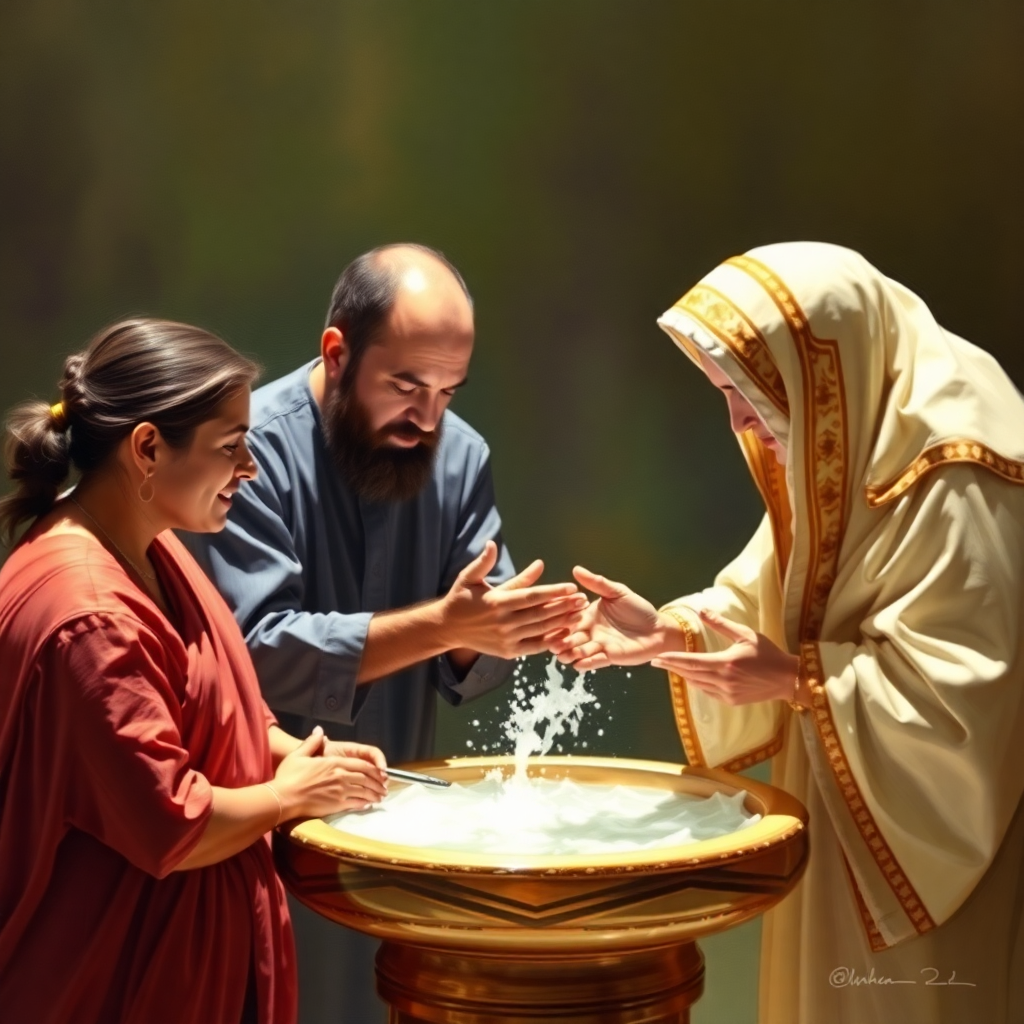Can a Woman Baptize a Man?
Some Christian traditions, such as Roman Catholicism and Eastern Orthodoxy, maintain that only a priest or bishop can perform baptisms, regardless of the individual’s gender.
Baptism holds significant importance within Christianity as a rite of initiation, symbolizing the believer's faith in Christ, the cleansing from sin, and the beginning of a new life in the faith community. However, the practice of who can administer this sacrament varies among different Christian denominations and traditions. This blog post will explore the scriptural basis, historical contexts, and contemporary discussions surrounding women's roles in baptism.
The Biblical Foundation
To understand the issue of whether a woman can baptize a man, it is essential to examine the biblical text closely. The New Testament records numerous instances of baptism, most notably in the Gospels and the Acts of the Apostles. Jesus’ command to baptize all nations is foundational.
The Great Commission, found in Matthew 28:19-20, states: "Go therefore and make disciples of all nations, baptizing them in the name of the Father and of the Son and of the Holy Spirit." While this passage does not specify the gender of the individuals authorized to baptize, it emphasizes the inclusive nature of the invitation to participate in the mission of the church.
Another important scriptural reference is Acts 2, where Peter delivers a powerful sermon after Pentecost, leading many to be baptized. The early church was characterized by a sense of shared ministry among its members, transcending cultural and social barriers. Notably, there are examples of women prominently featured in the early Christian community who played significant roles in ministry, such as Lydia and Phoebe, indicating that the early church was open to the active participation of women.

Historical Context and Tradition
Historically, the practice of who could baptize varied widely across the early church. In the early centuries of Christianity, it was common for laypeople, including women, to perform baptisms, particularly in emergencies or when a priest was not available. For example, the Apostolic Tradition, attributed to Hippolytus, mentions lay baptism in specific circumstances.
However, as the church organized itself into a more hierarchical structure, the administration of sacraments, including baptism, became increasingly reserved for ordained ministers. This transition reflected broader societal attitudes toward gender roles and authority, contributing to a restrictive view of women's roles in liturgical functions. Many historical church traditions began to formalize the notion that only ordained clergy could administer sacraments, often excluding women from such roles altogether.
Contemporary Perspectives
In modern times, the question of whether a woman can baptize a man is approached differently within various denominations. Some Christian traditions, such as Roman Catholicism and Eastern Orthodoxy, maintain that only a priest or bishop can perform baptisms, regardless of the individual’s gender. Their stance is rooted in theological interpretations of apostolic succession and the sacramental nature of baptism, interpreting it as a rite that requires ordained ministry.
Conversely, many Protestant denominations uphold a more egalitarian view, allowing for women pastors and elders to baptize regardless of the gender of the individual being baptized. This perspective emphasizes the priesthood of all believers, wherein every Christian, regardless of gender, is called to participate in ministerial roles. For example, in Anglican, Lutheran, and United Methodist traditions, women frequently baptize both men and women, reflecting a commitment to inclusive ministry.
Theological Implications
The implications of allowing women to baptize men extend beyond the act itself; they challenge the understanding of authority, gender roles, and the nature of ministry in contemporary Christianity. Granting women the right to baptize can symbolize a broader acceptance of women's leadership within the church, affirming their equal participation in all aspects of church life.
Moreover, inclusive baptism practices can enhance the church's outreach and accessibility, reflecting the belief that the Gospel is for all people, irrespective of gender. This inclusivity can strengthen the sense of community and foster deeper relationships in faith, as it demonstrates the church's commitment to participate in Christ’s Great Commission in a way that encompasses all believers.
Conclusion
Ultimately, the question invites believers to reflect on their understanding of authority and ministry in the context of their spiritual journey. Whether an individual views baptism as a rite reserved for ordained clergy or a sacrament that can be administered by any believer, this discussion reinforces the fundamental truth that all followers of Christ are called to participate in His mission, fostering a sense of community, unity, and purpose in the body of Christ.